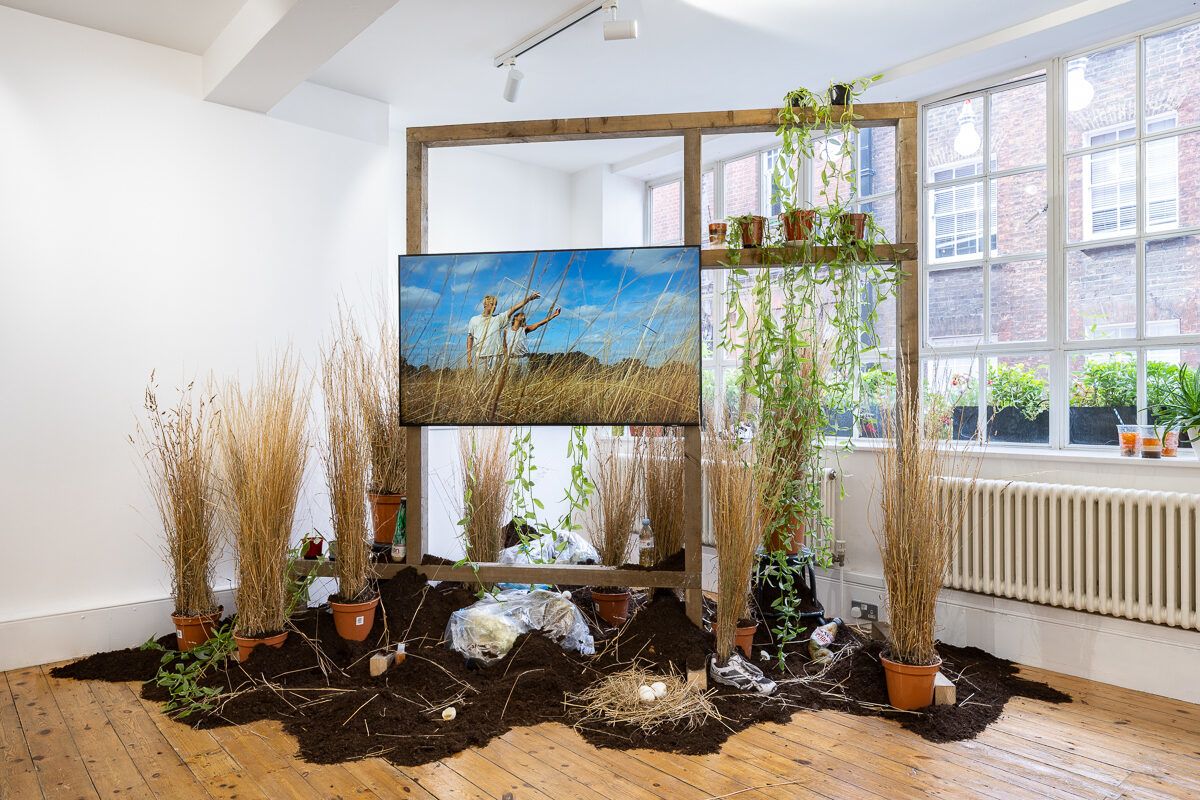20/20 meet the artists: Adham Faramawy

- Written byKatie Moss
- Published date 15 August 2023

In June, UAL announced the twelve emerging and mid-career artists in the second of 2 cohorts for 20/20: a national commissioning and network project directly investing in the careers of a new generation of ethnically diverse artists.
20/20 was launched in November 2021 by UAL Decolonising Arts Institute, working with a network of 20 UK public collections, museum and gallery partners, and with funding from Freelands Foundation, Arts Council England’s National Lottery Project Grants Programme and UAL.
We caught up with Adham Faramawy about being selected for the second cohort of artists for 20/20. His residency is taking place at Kettle's Yard.
Tell us about your artistic work, discipline & background
"I’m an artist. I’ve made work in a lot of different media from perfume, to performance, to print, painting and wall-based works, but mostly I make videos working with performers and dancers, often installed as part of sculptural assemblages.
"I’m Egyptian but I grew up in the UK, mostly in London and Norfolk. I wasn’t born here, so needing to think about migration and how it affects social relationships are part of my day-to-day experience.
"When my father passed away during the first lockdown in 2020, I couldn’t go to his funeral, so I made a video called ‘The air is subtle, various and sweet’, to spend some time exploring the complexities of our relationship by looking at our various relationships to land and to place. Him in his hometown of Toukh in Egypt, and me in Newham in East London."
Why did you apply for the 20/20 project?
"I applied to the 20/20 project because I had an unrelated studio visit from curator Habda Rashid, I described the work I’ve been making, how things have been shifting for me and Habda first told me about the project and encouraged me to apply.
"Initially I was suspicious that I’d need to apply for a project to get access to working with an institution, but after some thought, it felt like 20/20 could offer a space and resources to support the development of my research, a space to learn and to make."
What conversations, thoughts or feelings do you hope to encourage amongst your audiences during your residency?
"I’ve spent some time thinking about Kettle’s Yard in Cambridge. I went to visit to see a talk and was lucky enough to get a tour of the galleries. I was surprised to find that the part of the gallery that used to be collector and teacher Jim Ede and his partner Helen Ede’s home, is much as they left it. It looks like they just left somehow. Their collection is wonderful, full of domestically scaled modernist master works mixed with personal ephemera, seeds, stones, and flowers. The decisions they made really piqued my curiosity and it got me thinking about visiting, and what it is to host.
"I really enjoyed poet Bhanu Khapil’s book ‘How to wash a heart’, where she describes the stickiness of being a guest, and a minority, of having to rely on someone’s hospitality. I also looked at the writing of a curator I’ve worked with Sylvie Fortin, whose research for the past few years has centred on ideas of expanded hospitality, how an artwork can invite us to think in terms of inviting in. So, this is my entry point into the collection at Kettle’s Yard. I’m thinking about what happens when the personal becomes public, what it is for a home to become an important national collection and gallery.
"What kinds of politics of representation and erasure come to the fore? Who is the space for, who gets invited in?"
Follow Adham Faramawy on social media:
Instagram: @adham_faramwy